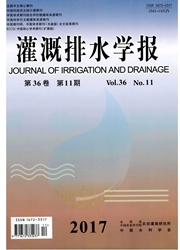

 中文摘要:
中文摘要:
在GIS技术支持下,采用经典统计学和地统计学方法对山东省房寺镇0-20 cm土壤盐分空间变异及其监测合理采样数量进行了研究。结果表明,研究区域土壤盐分属中等强度变异,受结构因素和随机因素的共同作用,土壤盐分具有中等强度的空间相关性;Kriging插值分析表明,土壤盐分的空间分布受微地形、气候和河流水入渗的影响,在地势较低处盐分含量高;应用Cochran公式和分层采样法对盐分监测合理采样进行了分析,发现分层采样法可以有效地降低采样数量,其中最优分配法可以获得最为合理的采样数量。对研究区域盐分监测采样以95%的置信水平、15%的相对误差为宜,布设的总采样点数目为40个。
 英文摘要:
英文摘要:
With the sustain of GIS,spatial variability and appropriate sampling quantity for depth soil lay of 0-20 cm was measured and analyzed by using statistics and geo-statistics in Fangsi Town of Shandong province.The results showed that soil salinity exhibited moderate spatial variation and moderate spatial autocorrelation resulting from compound impact of structural and stochastic factors.The spatial distribution map of soil salinity interpolation by Kriging interpolation indicated apparently that the spatial distribution of soil salinity was mostly controlled by micro-topography,climatic and river running water infiltration,and soil salinity content of the lower spot was higher.Analysis on the appropriate sampling quantity for salinity observation,which was determined by using Cochran and distributed sampling methods respectively,showed that distributed sampling methods could reduce the appropriate sampling quantity effectively,the appropriate sampling quantity for rational distributed sampling was the most reasonable and practical.The rational sampling quantity for available soil salinity would be 40 under 95% significant level and 15% relative error in the study area.
 同期刊论文项目
同期刊论文项目
 同项目期刊论文
同项目期刊论文
 期刊信息
期刊信息
